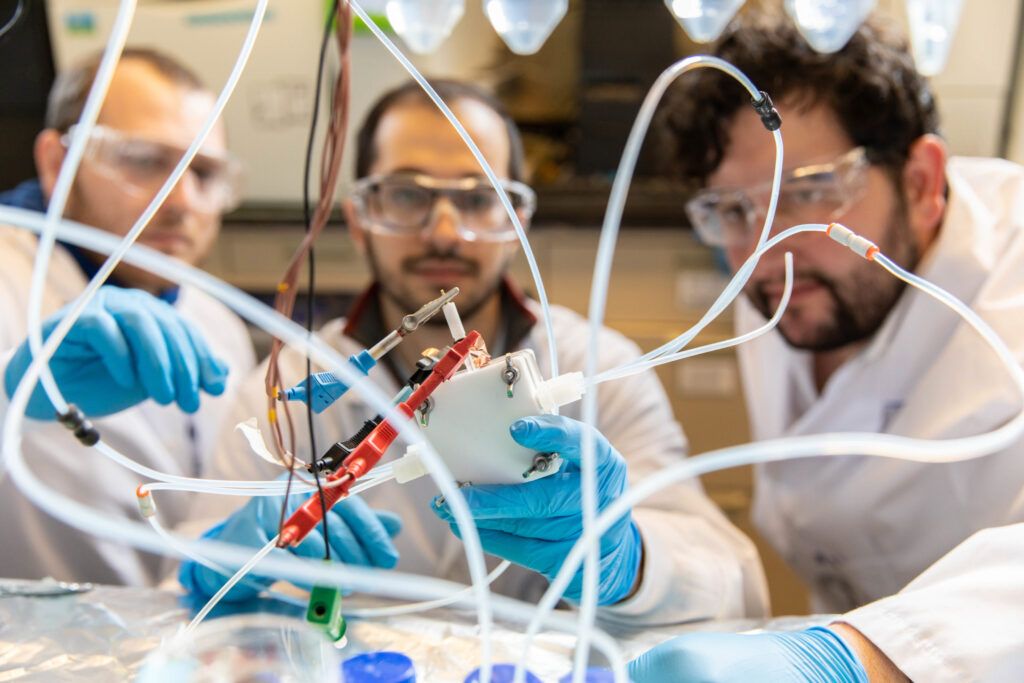Renewable Fuels
With the emergence of abundant renewable electricity, many industries are turning to electrification to reduce carbon intensity. Chemical manufacturing faces challenges, as conventional thermochemical routes are often not easily electrified.
In the Sargent group, we are developing electrocatalytic technology to synthesize chemical fuels and feedstocks using renewable electricity and water. We perform fundamental studies of catalyst materials and work to integrate them into full electrolyzer systems. We perform computational studies for screening of novel catalysts and develop new synthetic routes for their manufacture. We engineer gas diffusion layers and membrane electrode assemblies with industrially-relevant performance metrics in mind.
We seek to apply this approach to a variety of different chemistries where electrochemical routes are promising. These include:
• The conversion of carbon dioxide into chemical feedstocks (e.g. ethylene) and renewable fuels (e.g. methane, ethanol)
• Direct use of non-ideal feedstocks, including dilute streams and carbon capture solution
• Development of precious-metal free catalysts for efficient oxygen evolution
• Methods for upgrading of hydrocarbons and low-cost feedstocks to high-value chemicals



